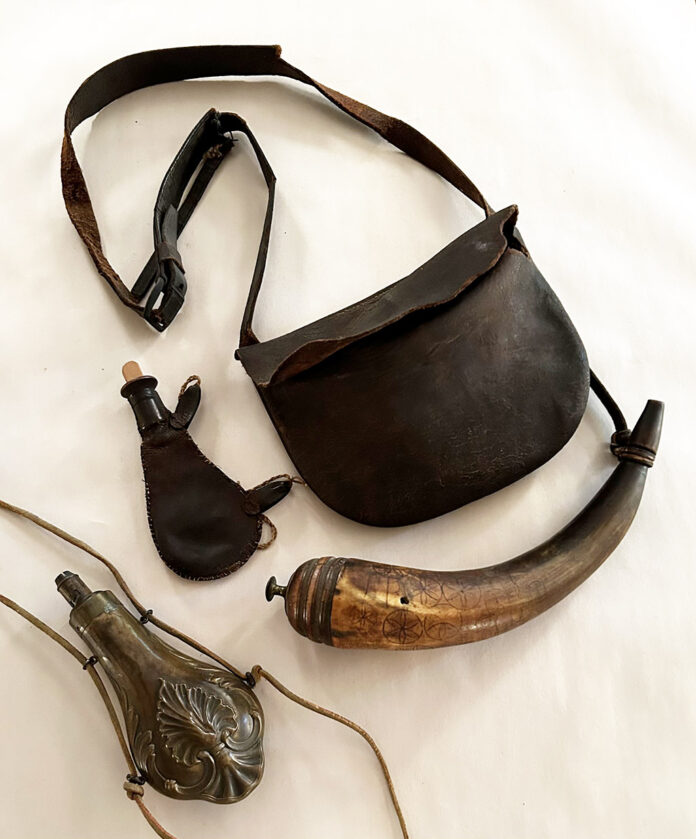
The fences that the settlers built to confine their livestock did little to prevent attacks by wild predators that took a deadly toll on flocks and herds. The problem was one constantly faced by settlers the length and breadth of the Ohio Country as they wrested embryonic farmsteads out of the all-encompassing wilderness. In the woods just beyond the edges of the clearings they had laboriously made, lurked wolves, bears, foxes and coyotes which found the fenced-in livestock easy pickings, and there was little the frustrated settlers could do to stop them. In addition, deer and racoons devoured their meager plantings of corn and the produce in their gardens.
For settlers in Hinckley Township in northeast Medina County, Ohio, the last straw came in the fall of 1818. In one night wolves and bears made their way through fences and killed 100 sheep in the township. The very next night 100 more head of livestock were killed in the same fashion. The infuriated settlers decided to form a committee with the goal of finding a way to exterminate the marauding wildlife from the township. The result was one of the most remarkable hunts ever organized in the Ohio Country.
The committee put the word out to the surrounding region that on Christmas Eve it would hold a great circle hunt. It was advertised that the committee would pay a bounty of $15 — a very handsome sum at the time — for every wolf killed. As a result of that invitation, some 600 hunters from Medina and surrounding counties showed up to participate. The men, who brought guns, rifles, pitchforks, clubs, mauls, flails, knives and axes, were divided into four teams which were positioned equally along all four of the square township’s borders. The commander of the hunt gave the order “All ready!” which was successively enunciated by every member of the hunt. It was reported that the order was spoken by every participant and the message was passed around the entire border of the township in 40 seconds. At that point bugles were sounded and the hunters stepped off and began firing their guns to start driving the animals ahead of them.
Over the next few hours the hunters moved forward in an ever-tightening circle, eventually corralling all of the animals in a one-half-square-mile area. At that point hunters climbed into trees and began slaughtering the animals, which included one of the largest bears ever reported in the region.
When it was all over, the toll was 21 bears, 17 wolves, 300 deer and untold numbers of turkeys, foxes, raccoons and opossums killed. Remarkably, only two of the hunters were injured by gunfire and their wounds were not life threatening. The organizers of the hunt paid the bounties for the wolves that were killed and divided the meat equally among all of the participants.
That night there was a huge, raucous Christmas Eve feast for all of the members of the hunt and the families in the township. Because it was winter and the ground was covered with snow, the animals were butchered for their meat and hides on site over the next few days. It was reported that large numbers of people flocked from miles around to see the carnage and hear the hunters’ stories.
The hunt allowed many settlers from Medina and adjacent counties to meet one another for the first time, and many lasting friendships were formed. Because most settlers worked in isolated conditions on their farms, it was their first opportunity, in many cases, to socialize with not only other residents of their own county, but those in adjacent counties as well.
After the meat and hides were hauled away by the participants in the hunt and their families, what was left of the animals remained frozen beneath the snow during the winter. When the spring thaw came and the offal thawed out, vast numbers of buzzards (turkey vultures) descended on the site, where they remained for months eating the remains of the slaughter. As a result of that, the buzzards became biologically imprinted on the site which today lies within a Medina Metroparks complex. Even after 206 years, buzzards return to the site every year in late March like clockwork and have become the official symbol of Hinckley, Ohio. In 1957 the community started a Buzzard Sunday festival at “Buzzards Roost” with 9,000 people in attendance. That popular tradition continues today, marked by a pancake breakfast and a daylong schedule of family fun and activities that include hikes, displays, crafts, skits and — of course — buzzard spotting.
Eventually, wolves and bears were driven to extinction in northeast Ohio, but in recent decades bears have made somewhat of a return to the region, their most serious depredations being rummaging through people’s trash cans and pulling down and emptying their bird feeders.













